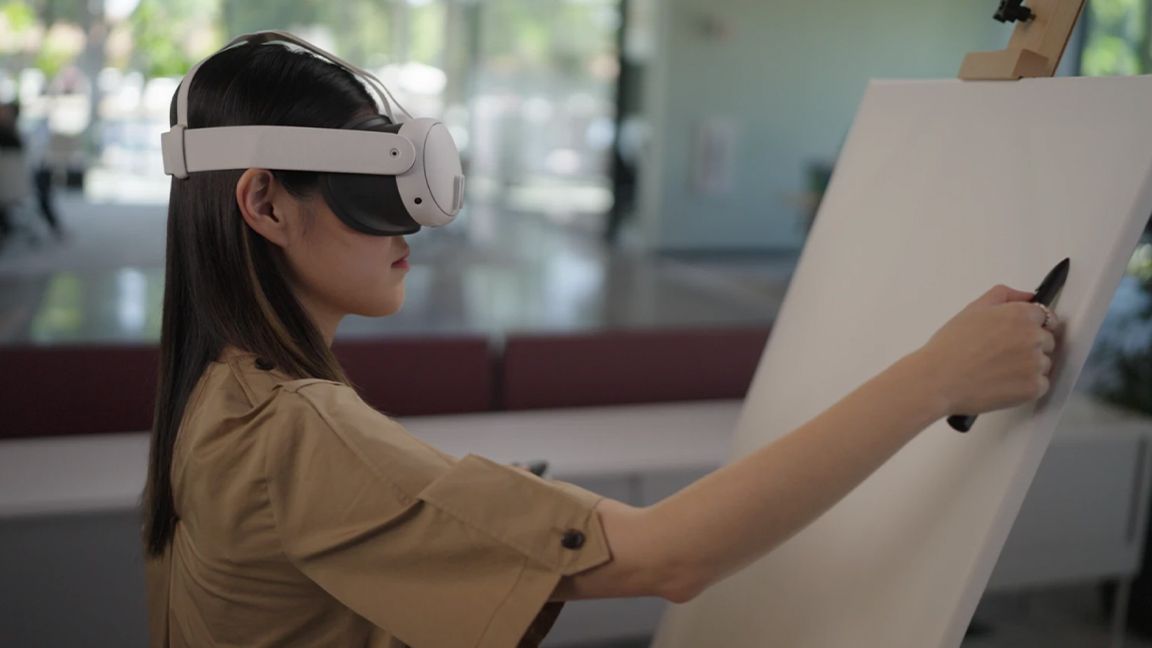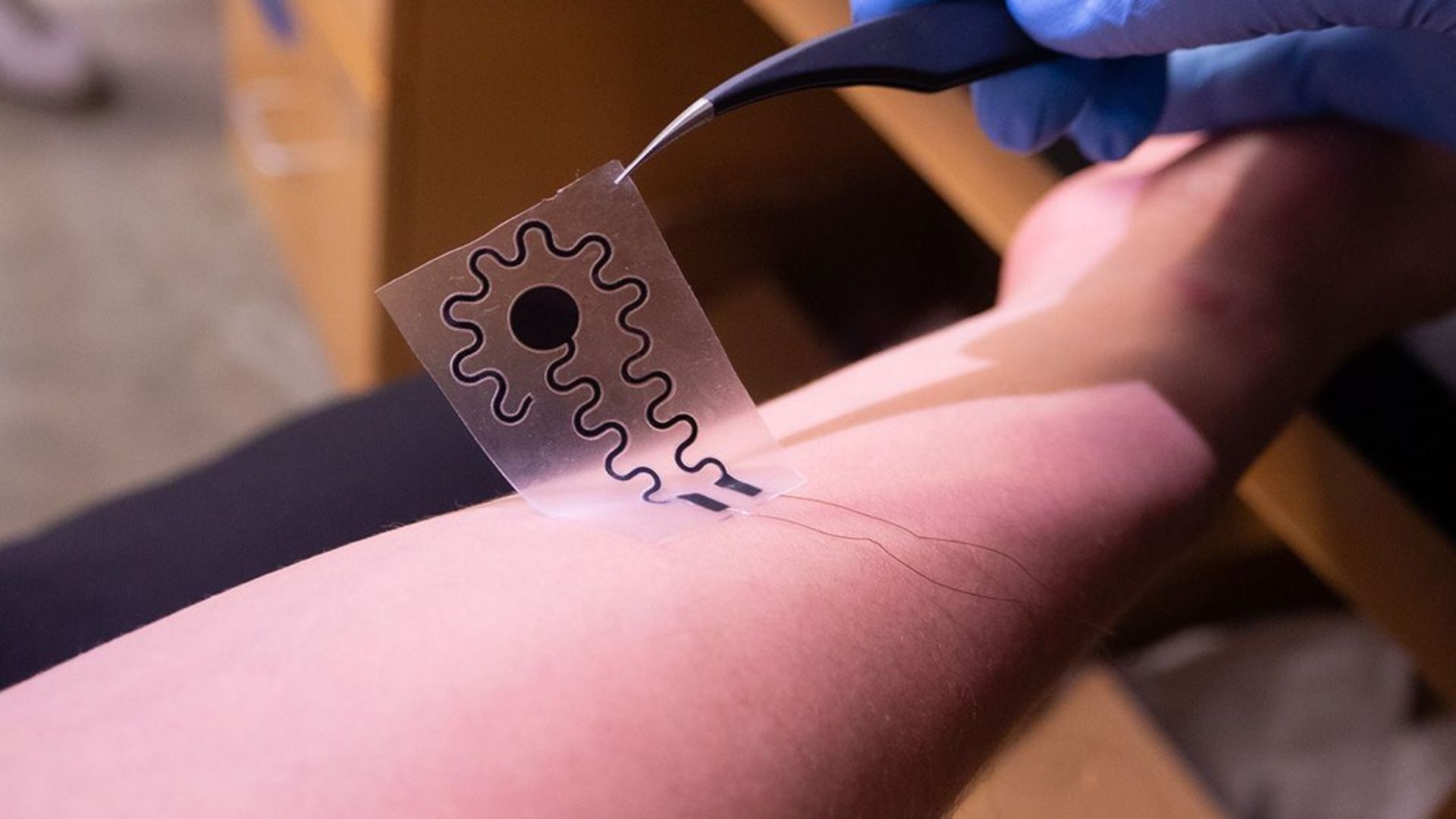Play For Dream MR is an Android space headset in the Vision Pro mold
Play For Dream MR
Ben Sin
Spatial computing glasses are all the rage these days, with Chinese brands like XReal, Viture and Rokid in the entry-level, relatively low-cost glasses market, and Apple’s Vision Pro and Meta’s Quest being the main players at the high end. headphone category (more expensive).
Shanghai-based Play For Dream is shaping up to be the first Chinese brand to enter the premium range simply named “MR,” a mixed-reality space headset that looks and functions very, very similar to the Vision Pro.
Play For Dream MR
Ben Sin
Like Vision Pro, Play For Dream MR uses front-facing cameras to capture the user’s environment and then projects the video onto their eyes. So the user is not literally seeing the real world when wearing the headset, but a video version of it. The MR headset will also be able to project graphics and visuals that look like they’re part of the real world, hence the term “mixed reality.”
Headphones MR
Play for the dream
The headset features 11 cameras, 22 LED lights and seven types of sensors to do all this work, powered by Qualcomm Snapdragon XR2+ Gen 2 silicon. For software, MR runs a proprietary launcher built by Play For Dream based on Android 14.
I got to try out the headphones for an hour at its launch in Singapore and came away very impressed. I own the Vision Pro and use it regularly, and for me, I find the Play For Dream headphones to be more comfortable to wear. At first I thought that the headphones were lighter, but it turns out, at 650 g, the MR headphones are not much lighter than the Vision Pro, but they are more comfortable to wear due to better weight distribution. Play For Dream designed the headset to have a 3:2 weight ratio, so the weight isn’t completely front-loaded, pressing down on my face like the Vision Pro.
Another thing that the Play For Dream MR does perhaps better than the Vision Pro is that its MicroOLED display produces 4K resolution per eye for a total of 8K output. During my demo, I watched a space video of a woman greeting me, and she looked so real — standing life-size in front of me, with sharp enough 8K resolution — that my brain did a double take.
Space video via Play For Dream MR
Ben Sin
It looked very real in my eyes. I suggest watching the video above to see these sample videos in action.
A space video of a woman seen through the Play For Dream MR headset
Ben Sin
To control the headset, Play For Dream says the final consumer version will use a combination of hand and eye tracking, just like the Vision Pro. But the prototype I tested required the use of two remote joystick controllers. I didn’t mind, as the controllers’ analog stick and triggers provide a more tactile experience.
Projecting a screen
Ben Sin
I was also able to mirror a Windows laptop screen on the headset, projected at a large size, floating in front of me. The prototype unit can open two windows, but I’m told the final version will be able to open five windows.
Because this headset is more comfortable to wear, I think I’ll be able to use it for productive work in ways I can’t with the Vision Pro.
I’m also excited about being able to run Android apps on the headset, since it runs Android software.
Play For Dream MR
Ben Sin
Play For Dream MR
Ben Sin
However, we must address the elephant in the room: the entire exterior design of the Play For Dream MR looks identical to the Vision Pro. From the button placement including a curved dial, to the mesh eyepiece, to the curved visor front, this headset looks just like the Vision Pro, but with a darker shade of color.
Play For Dream MR
Ben Sin
I’m disappointed by this because there is a Western (maybe even global) perception that Chinese tech brands just copy what Apple does, and that definitely doesn’t help the case. The point is that Play For Dream has created a very impressive performance headset using bleeding edge technology, but I fear that most of the western coverage of this product will see the design and dismiss it as a “Vision Pro nockoff” or “Vision Pro clone”. “
I wish this headset had a different exterior, but when it comes to how it feels on my head and how it performs, I think the Play For Dream has done a great job.
The Play For Dream MR headset will go on sale in October starting first in China, Singapore and Malaysia, followed by other Asian regions. Retail price hasn’t been set yet, but the company promises it will be under $2,000.
#Play #Dream #Android #space #headset #Vision #Pro #mold
Image Source : www.forbes.com
Related Posts

Stylus VR for digital art and design: everything you need to know

The new electrode enhances haptic technology, to improve VR, prosthetics

